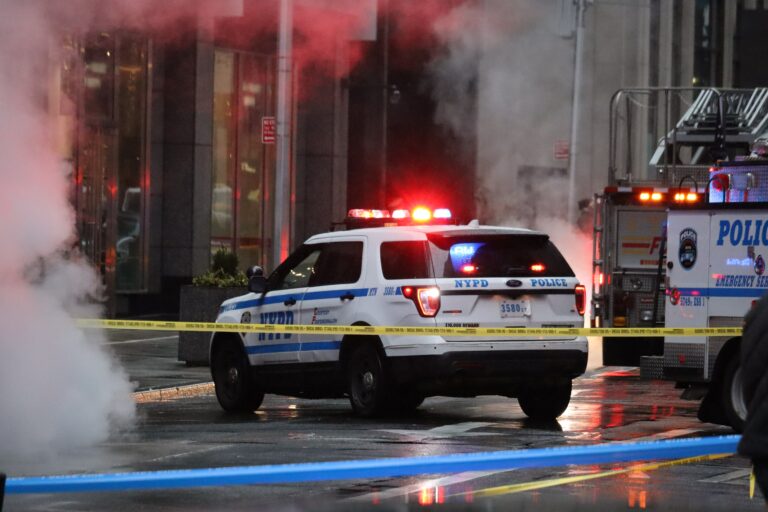America’s multi-year spike in homicides may finally be receding.
At the midway point of 2023, the murder rate is down roughly 11 percent in 100 major U.S. cities. That’s the conclusion of a new report from Jeff Asher, a widely-cited crime analyst and AH Datalytics co-founder. He found the overall murder rate is still about 12 percent above pre-pandemic levels. But the numbers are currently on track to result in approximately 2,500 fewer murders nationally than the post-pandemic peak in 2021.
“The decline in big cities would portend to a 7-10 percent decline nationally in 2023 if that figure holds up,” Asher, a former analyst for the Department of Defense and New Orleans Police Department who has authored pieces on crime statistics for CNN, The New York Times, and The Atlantic, wrote last week. “It would also be among the largest declines in murder ever formally recorded.”
The early 2023 data offer a glimmer of hope that the dramatic uptick in homicides shortly after the onset of the COVID pandemic in 2020 is starting to abate. The effects could be both practical and political. The pandemic-era uptick saw the reemergence of crime—and by extension, access to guns—as a salient political issue in a way not seen since the height of the country’s violent-crime wave in the 1990s. If violent crime were to decline, public support for new gun restrictions as a solution could decline along with it.
Asher’s estimates have gained significant attention both because they are available sooner than official government reports and because some government data has degraded in recent years. The FBI, tasked with collecting and publishing crime statistics each year, recently made significant changes to how it requires state and local police agencies to report their crime data1. That change led to significantly lower participation among the nation’s law-enforcement agencies, with nearly 5,000 fewer agencies reporting their 2021 stats than the previous year. The result has been less reliable data that the agency estimates only covers about 69 percent of the population.
Asher’s data, gleaned from city police departments that make crime data publicly available, show murder is down through the first half of this year in major cities. Those include New York, Los Angeles, Chicago, and Philadelphia–a city that experienced an all-time high in homicides during 2021. And Asher found the decline is also visible in smaller cities with historically high murder rates.
“New Orleans likely had the nation’s highest murder rate for any city over 250,000 [in population] in 2022 while Jackson, MS likely had the nation’s highest murder rate for any city over 100,000,” Asher wrote. “Murder is still high in both places, but it fell over the first half of the year. The same is true for St. Louis and Baltimore, two cities that have had the nation’s highest murder rate at various points over the last decade.”
Despite the overall positive signs in the available data, Asher cautioned against drawing conclusions about murder trends too broadly. His data set is even smaller than the FBI’s sample, and he said there are significant limitations with the crime reporting practices of the various law-enforcement agencies involved in collecting it.
“One challenge with guesstimating the national murder trend with only 100 agencies of data is that there are no standardized reporting processes,” he said.
For example, some high-profile mass killings, such as last May’s supermarket attack in Buffalo, New York, have not yet been accounted for in the city’s homicide totals because they are only updated through April. Nevertheless, Asher pointed to other data sources to confirm a sustained dip in murder. The Gun Violence Archive (GVA)—an activist website that tracks mass shootings and other gun-related violent crimes using a combination of government data and media reports—has also identified a decline in firearm homicide this year, he noted.
“If GVA is down 5 or 6 percent in 2023 and the big city sample is down 10 to 12 percent then we would have pretty strong evidence of a 8 to 10 percent decline in murder nationally which would be formally confirmed by the FBI when they release 2023 crime data in October 2024,” Asher wrote.
While most major cities have had success in reducing their homicide rates, and murder in the nation overall is declining, some cities have seen homicides increase in 2023. Murder is up nearly 19 percent year-to-date in Washington, D.C., for example, and it is up 39 percent in Memphis, Tennessee. Cities like Dallas, Nashville, and Seattle have also seen modest upticks so far this year. But Asher concluded the overall trend is positive, at least for now.
“Of course there are still 6 months left in the year so anything could still happen,” he wrote. “The available data continues to point to a large decline in murder nationally though just how big the decline will be will be determined by what happens over the next few months.”






